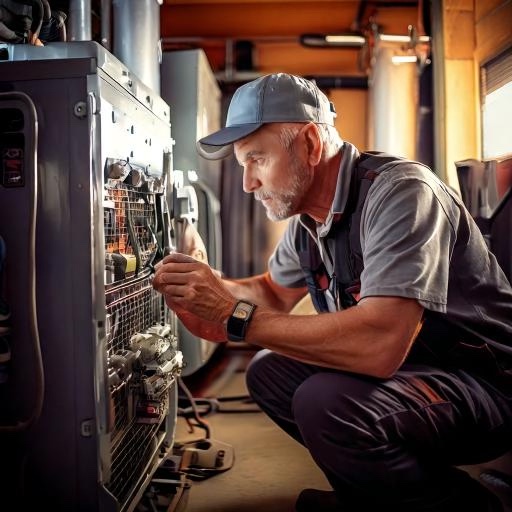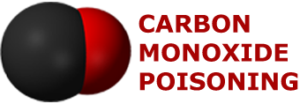FAQ: How is carbon monoxide created in a house furnace which should be burning clean?
Short Answer: Poor maintenance or an interference with the fresh air supply for the fire to burn, are usually the reasons why carbon monoxide escapes from a home furnace. Cracked heat exchangers are the other common cause. Get your furnace serviced at the beginning of every heating season and replace furnaces when they get to the end of their useful life, which is never more than 25 years.[1]
[1] https://www.carrier.com/residential/en/us/products/furnaces/how-long-does-a-furnace-last/ “A well-maintained furnace can last at least 15 to 20 years.. When your forced air furnace is about 15 years old, it’s a good idea to start looking at new equipment to be prepared when it comes time to replace your furnace.”
From our video podcast on FAQ’s with Attorney Gordon Johnson and Attorney Griffith Winthrop:

How is Carbon Monoxide Created in a House Furnace? Poor maintenance or mistakes in installation often result in not enough fresh air getting to the flame. Also, furnaces should always be replaced at the end of the manufacturers recommended life expectancy, often 18-25 years.
Gordon Johnson: Let’s just talk about the simple frequently asked question: how does carbon monoxide form in a furnace, or other fuel burning appliances? How is carbon monoxide created in your furnace at home?
Griff Winthrop: Your furnace at home needs three things to have heat, right? It needs ignition, which is always easy. You either have it or you don’t. Usually it’s a spark. Essentially the spark, some sort of a spark to start the fire.
But the fire also needs oxygen and it needs fuel and the fuel that is used in furnaces is either propane or it is natural gas. And both have different properties. Both have different requirements as far as how much pressure is needed to have proper combustion. A perfect fuel air mixture is known as stoichiometric, and not to get too much into the weeds. That is not how these things are designed.
Gordon Johnson: Not even AI is going to be able to spell that word.
Griff Winthrop: Stoichiometric.
Gordon Johnson: So it took me a week to learn how to say that word.
Griff Winthrop: Yeah, it’s a hard word. But engineering students learn that concept. And it’s not the way furnaces or boilers are designed..
Gordon Johnson: Stoichiometric means the exact amount of fuel for the exact amount of oxygen.
Griff Winthrop: That’s right to the molecule.
Gordon Johnson: If you were on a space shuttle where you had to ration your oxygen, maybe that would be the goal, right?
Griff Winthrop: A furnace molecule, it’s theoretical. It’s difficult to maintain. And that’s why they’re not designed that way. These appliances are designed to be fuel lean, meaning a little too much OXYGEN there and a little too little fuel to have a safety margin. Because if you go stoichiometric with one molecule, you’re off. You’re incompletely combusting your fuel.
And why is that important, Gordon? Why is incomplete combustion dangerous?
FAQ: Why is incomplete combustion the cause of carbon monoxide poisoning?
Short Answer: Incomplete combustion results in insufficient oxygen for the flame in the furnace and thus CO molecules are formed, not CO2. This happens when there is too much fuel or not enough oxygen.
Gordon Johnson: The easiest teaching example of how carbon monoxide forms is you have too much gas. Usually the amount of oxygen should be predictable. So something goes wrong with the gas supply in the furnace. We are looking at there. The gas valve’s stuck in the wrong location. And maybe it was the cause and maybe it was the result of. But at the end, when our clients almost died, that gas valve was stuck and there was way about 40 to 50% too much gas going in there.
The more common situation that we see, and we see it an awful lot in rural cases, and I and I’m guessing I’ve seen it 5 or 6 times is that there is a propane which comes in the tanks versus in the city, people who get their gas out of the out of the city gas lines. Propane has higher octane than natural gas does. So to get what you called slightly lean burn? -you have to reduce the amount of fuel getting to that flame by about 40%.
To do that, what manufacturers require installers to insert an orifice in the fuel line. It’s just basically a little cone type fitting inside the gas line to reduce how much actual gas from the propane tube gets into the furnace. If they forget to do that, you’re going to get a 40% over burn and you’re going to have 50,000 parts per million in your exhaust.
Griff Winthrop: Most of these appliances are sold as natural gas application, meaning they won’t have that orifice. So if the installer screws up or you’ve got somebody that’s trying to do their own installation in their home or some home that they rent to somebody else, we’ve run across this before.
They oftentimes will not know or remember that when they’re installing it in a propane application, they have to have that orifice. And then they set the fuel pressure and they’re busy poisoning everybody there. So it happens a lot. Also, we saw it in a case involving a one of those tankless heaters.
It was a natural gas application that was put into a propane application without the orifice, and it was very deadly situation.[2]
[1] https://www.carrier.com/residential/en/us/products/furnaces/propane-furnaces/ “The conversion is handled by a qualified HVAC technician using a conversion kit. The conversion involves replacing natural gas burner orifices with orifices that are calibrated for propane, installing “spoiler screws” in the burner, and adding a low gas pressure switch.”
[2] https://www.carrier.com/residential/en/us/products/furnaces/propane-furnaces/ “The conversion is handled by a qualified HVAC technician using a conversion kit. The conversion involves replacing natural gas burner orifices with orifices that are calibrated for propane, installing “spoiler screws” in the burner, and adding a low gas pressure switch.”
